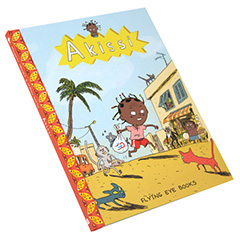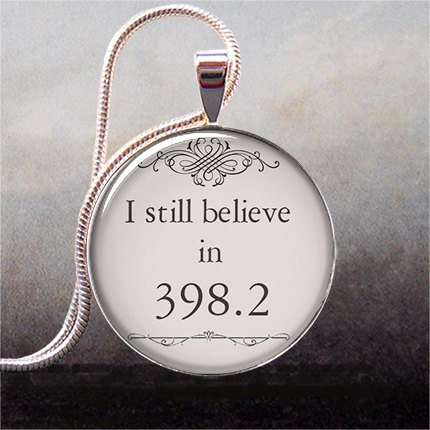A bit ironic as I was trying to escape from Chicago's O'Hare airport when I started reading this one! Honestly, I wasn't in the best frame of mind when I opened the cover. I was delayed, then canceled. Many hours and gate-changes later, I was delightfully immersed in this book written so clearly for book lovers!
Viewing: Blog Posts Tagged with: Dewey Decimal System, Most Recent at Top [Help]
Results 1 - 6 of 6
Blog: Welcome to my Tweendom (Login to Add to MyJacketFlap)
JacketFlap tags: libraries, friends, school, games, Mystery, Random House, teamwork, Dewey Decimal System, love of literature, arc from publisher 6/13, Add a tag
Blog: A Fuse #8 Production (Login to Add to MyJacketFlap)
JacketFlap tags: consumerism, obits, sequels, jewelry, Nathan Hale, Dewey Decimal System, New Blog Alert, The Last Unicorn, E.L. Konigsburg, Fusenews, book jacket nattering, Giant Dance Party, literary footwear, Stephanie Whelan, tapeworms, Willy Wonka and the Chocolate Factory, Add a tag
Well sir, it’s a heckuva week. Book stuff is happening out the wazoo, but for a moment I’d like to concentrate on what else is going on in the wider children’s literary world. What say we Fusenews it up a bit, eh?
 Of course there’s no way to begin today without a hat tip to the late, great E.L. Konigsburg. The only person, I believe, to win both a Newbery Award and a Newbery Honor in their debut year. Top THAT one, folks! The New York Times pays tribute to one of our luminaries. We had managed to do pretty well in 2013 without losing one of our lights. Couldn’t last forever. Godspeed, Elaine.
Of course there’s no way to begin today without a hat tip to the late, great E.L. Konigsburg. The only person, I believe, to win both a Newbery Award and a Newbery Honor in their debut year. Top THAT one, folks! The New York Times pays tribute to one of our luminaries. We had managed to do pretty well in 2013 without losing one of our lights. Couldn’t last forever. Godspeed, Elaine.
- Speaking of deaths, I missed mentioning my sadness upon hearing of Roger Ebert’s passing. Jezebel put out a rather nice compilation of Roger Ebert’s Twenty Best Reviews. I wonder if folks ever do that for children’s book critics. Hm. In any case, amongst the reviews was this one for Willy Wonka and the Chocolate Factory. It’s rather brilliant. See for yourself.
12. On the original Willy Wonka & the Chocolate Factory:
“Kids are not stupid. They are among the sharpest, cleverest, most eagle-eyed creatures on God’s Earth, and very little escapes their notice. You may not have observed that your neighbor is still using his snow tires in mid-July, but every four-year-old on the block has, and kids pay the same attention to detail when they go to the movies. They don’t miss a thing, and they have an instinctive contempt for shoddy and shabby work. I make this observation because nine out of ten children’s movies are stupid, witless, and display contempt for their audiences, and that’s why kids hate them….All of this is preface to a simple statement: Willy Wonka and the Chocolate Factory is probably the best film of its sort since The Wizard of Oz. It is everything that family movies usually claim to be, but aren’t: Delightful, funny, scary, exciting, and, most of all, a genuine work of imagination. Willy Wonka is such a surely and wonderfully spun fantasy that it works on all kinds of minds, and it is fascinating because, like all classic fantasy, it is fascinated with itself.” [January 1971]
- New Blog Alert: Now I would like to brag about my system’s children’s librarians. They are uniquely talented individuals. Smart as all get out. One that I’ve always been particularly impressed with is Stephanie Whelan, a woman I trust more than anyone else when it comes to finding the best in children’s (not YA) science fiction and fantasy fare. Now Stephanie has conjured up one doozy of a blog on that very topic. It’s called Views From the Tesseract (nice, right?) and it looks at a lot of science fiction and fantasy specifically with side views of topics in the field. You’ll find posts with subjects like A Matter of Taste: Preferring One Genre Over Another, Five Fantasy Pet Peeves, and the fascinating delve into the world of Tom Swift in The Swift Proposal. Stephanie also has access to galleys so be sure to check out her early reviews for books like William Alexander’s Ghoulish Song and Sidekicked by John David Anderson (which I’m reading right now on her recommendation).
- Turns out that the Mental Floss piece 11 Book Sequels You Probably Didn’t Know Existed spends an inordinate amount of time looking at children’s books. Check it out for mentions of the 101 Dalmatians sequel (missed that one), the E.T. sequel The Book of the Green Planet (which, if memory serves, was illustrated long ago by David Wiesner and is the only book he no longer owns the art of), and more.
- Nice blogger mentions this week. Thanks to Sara O’Leary for mentioning my new website and to Jen Robinson’s for the nice review of Giant Dance Party. I appreciate it, guys! Plus Jen is the first review I’ve read that draws a connection between my book and the Hunger Games series. Few can say so much.
 Speaking of reviews, I owe Travis Jonker a debt of gratitude for reviewing Marguerite Abouet’s Akissi. I read that book in the original French a year or two ago and was completely uncertain if it would ever see the light of day here in the States due to a final story that, quite frankly, DEFIES anything I’ve seen in children’s literature before. The kind of thing that makes Captain Underpants look tame. You have been warned. Great book, by the way. Let’s not lose sight of that.
Speaking of reviews, I owe Travis Jonker a debt of gratitude for reviewing Marguerite Abouet’s Akissi. I read that book in the original French a year or two ago and was completely uncertain if it would ever see the light of day here in the States due to a final story that, quite frankly, DEFIES anything I’ve seen in children’s literature before. The kind of thing that makes Captain Underpants look tame. You have been warned. Great book, by the way. Let’s not lose sight of that.
- Not too long ago I spoke to a group of 6th graders at Bank Street College’s school about contemporary book jackets and how they’re marketed to kids. Only a portion of my talk was dedicated to race or gender. Fortunately, the kids have been thinking long and hard about it. Allie Bruce has posted twice about a covers project the kids have participated in. Be sure to check out race and then gender when you have a chance. Food for thought.
- For a certain kind of person, the title of this website alone will cause a flutter and palpitation of the heart: The Last Unicorn Screening Tour (featuring Peter S. Beagle and fans everywhere). You know who you are. Big time thanks to Marci for the link.
- Newsflash: Americans Still Love Libraries. Comes with its own infographic, so you know it’s true. Thanks to Lese Dunton for the link.
- What do Pinkalicious, A Ball for Daisy, and Square Cat all have in common? Read ‘em to your kids and you’ll be teaching them that consumerism is king. So sayeth a 196-page thesis called “Cultivating Little Consumers: How Picture Books Influence Materialism in Children”, as reported by The Guardian. And they might have gotten away with the premise to if they just hadn’t brought up I Want My Hat Back. Dude. Back away from the Klassen. Thanks to Zoe Toft (Playing By the Book) for the link.
- You may have heard that Simon & Schuster finally announced that it will start making e-books available to all three New York City public library systems. The press certainly picked up on the story and many articles have been generated. Curious? Then read these pieces in Mashable, The NY Daily News, MediaBistro (Galleycat and Fishbowl NYC), Publishers Weekly, Fast Company and The Associated Press.
- Okay. I’m just gonna go out on a limb here and say it. Marjorie Ingall has created, without a doubt the most impressive children’s book footwear post of all time. Honest-to-god, if you don’t bow down before her for that English Roses shoe, you have no soul.
- Required Reading of the Day: There are few authorial blogs out there even half as interesting as Nathan Hale’s. And when the guy gets a fact wrong in one of his books, he’ll do anything to set it right. Even if it means going to Kansas. Here’s how he put it:
We made a HUGE historical error, and we are going to fix it! We are going to learn why Kansas wasn’t a Confederate state–why it was a “Free State,” and how it happened. We are also going to visit Kansas on an official apology and correction trip. When we are finished, all Hazardous Tales readers will know how to correct their own copy of Big Bad Ironclad! Stay tuned!
You can see the official ceremony here, but be sure to read all the blog posts he drew to explain precisely why Kansas was a free state anyway. You can see Part One, Part Two, Part Three, Part Four, Part Five, and Part Six.
- Daily Image:
It’s not the holiday gift giving season, but if you know a librarian in need of a unique gift, I have your number.
Awesomesauce. Thanks to Marchek for the link.
Blog: A Fuse #8 Production (Login to Add to MyJacketFlap)
JacketFlap tags: J.R.R. Tolkien, Neil Gaiman, Uncategorized, C.S. Lewis, G.K. Chesterton, Maurice Sendak, Wait Wait Don't Tell Me, Gwenda Bond, Oliver Jeffers, Matilda, Dewey Decimal System, Megan Whalen Turner, Jack Gantos, Infographics, Battle of the Kids' Books, The Phantom Tollbooth, Chris Raschka, Fusenews, stage adaptations, tattoos for every occasion, Add a tag
 And then it’s February. How the heckedy heck did that happen? Looks like 2012 is already establishing itself as the Blink and You’ll Miss It year. Well, let’s get to it then.
And then it’s February. How the heckedy heck did that happen? Looks like 2012 is already establishing itself as the Blink and You’ll Miss It year. Well, let’s get to it then.
First and foremost was the announcement of Battle of the Books 2012. Or, as I like to think of it, the place where Amelia Lost gets its bloody due (if there’s any justice in this world). We’re now in the earliest of the early days of the battle, but stuff’s on the horizon. I can smell it.
- In other news there was an SCBWI (Society of Children’s Book Writers and Illustrators) meeting here in New York this past weekend. I didn’t attend because, apparently, if it’s way too convenient I’m absent. After checking out the recap on this blog, however, I clearly need to change my priorities. Though I had to miss the cocktail party on Friday I did attend Kidlit Drink Night which was PACKED, dudes. Packed to the gills!
- I like me some Megan Whalen Turner, which is pretty much just another way of saying that I am human and I can read. In any case, the woman knows how to make words work. Case in point, this guest post she penned a little while ago which might as well be called The Evolution of Not-Telling Or, how my policy of not answering questions about my books began as self-serving and over time became something even more self-serving. Mm. Worth it. Thanks to Beth Fama for the link.
- In her post Ms. Turner mentions the Mythopoeic Society. By complete coincidence I stumbled over yet another link involving that society in question. Neil Gaiman reprints an old speech he gave to the society in 2004 on C.S. Lewis, Tolkien, and Chesterton. A great look at how good fantasy can influence kids. Also a good look at how bad television programs lead kids to books. I believe it.
- Well The Today Show may have passed up the chance to talk to the Newbery and Caldecott winners but leave it to NPR’s Wait Wait Don’t Tell Me to speak to Jack Gantos for their Not My Job game. Someone must have tipped them off to the fact that the man is the world’s greatest interview. Love the Judy Blume reference. And though I thought I knew his Hole in My Life story, clearly I missed some details. Thanks to Susan Miles for the link.
- Of course Jack and Chris Raschka were interviewed by SLJ about their respective wins. That’s good news about a Dead End in Norvelt companion novel. Ditto the idea of Raschka working on a Robie H. Harris title.
Blog: Explore the Internet with Linda Aksomitis (Login to Add to MyJacketFlap)
JacketFlap tags: Dewey Decimal System, Add a tag
The Dewey Decimal Classification System or DDC is used to organize materials in a library collection. You'll find it in most school and public libraries! Let's take a look at some online resources that will introduce you to the DDC.
Video #1 - How Do You Do the Dewey
Video #2 - Dewey Decimal Game
Let's end with the Librarian's Manifesto - video #3
Links
The Dewey Decimal Classification System - http://bpeck.com/references/DDC/ddc.htm
Understanding the DDC through Innovative Displays (great ideas for librarians) - http://understandingddc.blogspot.com/

A matching game to test yourself - http://www.studystack.com/matching-471
Hotlist of URLs on the DDC - http://www.kn.att.com/wired/fil/pages/listthedeweli.html
Learn with Linda: Library Training Certificate or Introduction to Internet Writing Markets
Blog: YALSA - Young Adult Library Services Association (Login to Add to MyJacketFlap)
JacketFlap tags: organization, New Librarians, Dewey Decimal System, Add a tag
I once worked in a library where, despite a gigantic REFERENCE sign prominently located by the front entrance, patrons were constantly coming to circulation to ask where the reference desk was. Actually, patrons asked us about everything–often without looking at the prominently located floor plan or just about any sign in the building. (”We’re librarians,” my boss once said, with more than a little snark–”We like to put everything on little signs and then complain when no one reads them.”)
I’ve been thinking about signage and organization a lot lately, because my students seem to have a really hard time finding anything in my library. And I don’t just mean the Stephen King novels, which until recently were inexplicably shelved in the periodicals room.
Part of the problem is that I never got the chance to really give library orientations at the beginning of the year, and part of the problem is a funky layout (Stephen wasn’t the only one languishing in the periodicals room) that I haven’t quite gotten around to completely remedying.
But a bigger issue, I think, is the way my students want to find books. They’re browsers, and wanderers, and amblers. They stroll along the fiction shelves, and then end up coming back to the circulation desk and asking, “Do you have any books about…?” Or genre questions (”Where’s the science fiction?”), which are making me seriously reconsider the way our fiction is shelved–alphabetical by author, regardless of genre.
So how do you organize your collection? Are you still using strictly Dewey or LC call numbers, or do you operate more thematically? Do you separate popular genres out from fiction at large? Do you have a distinct location for graphic novels? What about non-fiction graphic titles? Are your shelf labels and signs exasperated-librarian-tiny, or supermarket-aisle-huge?
Add a CommentBlog: Designing Fairy (Login to Add to MyJacketFlap)
JacketFlap tags: sunflowers, book art, flower art, IF art, Add a tag
 New growth is on the horizon!
New growth is on the horizon!This is my S is for Sunflower & Self-confidence from my Healing Alphabet book/card deck I'm creating. This piece has so much movement, now that I look at it. I was so excited I had something in my repertoire to actually post on a Friday, even in the middle of this crazy, busy season!

















I'm so glad my book did for you what so many books have done for me == stuck on the same tarmac! I remember a friend handing me iNTO THIN AIR right before a six hour delay. I survived!
Chris Grabenstein
Thanks for stopping by, Chris! It really is a delightful book. As I said, I cannot wait to get back to school to share it with my students.
It looks like a good book! Not to mention the cover is beautiful. I seem to enjoy books about other books.